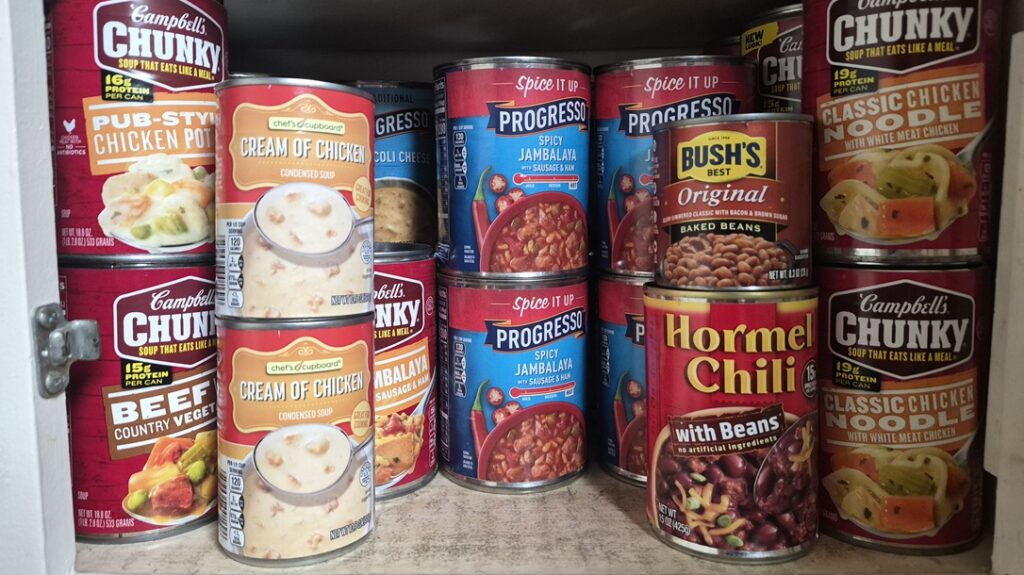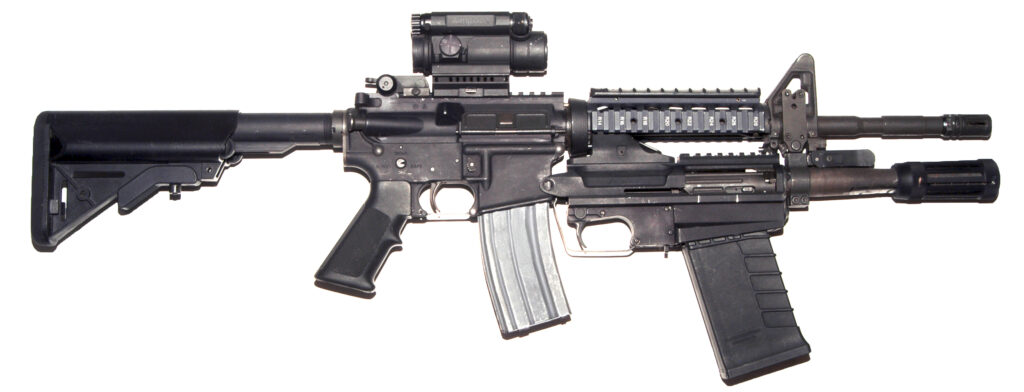Now for the trigger

From the images, you can see that BG’s CCS 2-Stage Straight Trigger is a departure from the mil-spec included in your standard parts kit or rifle. The wide straight trigger bow with the beveled edges and the elongated pins held from walking and rotating by wider heads and c-clips stand out, visually differentiating the Type-A SIPR’s from other AR-15 designs, like the handguard. The machined edges make the trigger comfortable to pull and feel like less of a departure from the traditional trigger bow while giving the advantages of the straight blade on the trigger pull mechanics.
Advertisement — Continue Reading Below
How does the CCS feel? Like a quality two stage trigger. A light take up, the expected wall of the second stage, the break, and then the forward reset. I compare it favorably to Geissele’s DMR 2-stage but with a little more travel. As a stock factory trigger, the CCS is phenomenal. I’ve become a Geissele fan but I wouldn’t swap this trigger, the net gain wouldn’t be there since the CCS trigger is excellent. The Geissele wouldn’t be enough of a better trigger, just my preference of triggers based on travel distance.
When talking with BG about both the handguard and trigger manufacturing process they summed it up “It’s a labor of love…” the exacerbation of a perfectionist mentality and the many iterations of prototyping and proper specifications took substantial time and effort. That effort paid off though as both products are impressing the end users immensely.
The back of the rifle ends with a Mil-Spec receiver extension/buffer tube and an MOE stock from Magpul. Not fancy, just functional. (Update: The current rifles use MOE SL Stocks)
Advertisement — Continue Reading Below
Now let’s get it to the range

First first data point, two rifles (not pictured) went to attend a Pat McNamara rifle course. The two-day course was an excellent ‘deep water jump’ for the Type-A, if they couldn’t perform there they wouldn’t tread water anywhere else. The rifle owner’s summed it up succinctly “They ran, as well or better than everything else on the line. No issues.”
My experience mirrored that of the two course tested rifles. The Type-A SIPR (bottom) went out against my personally built rifle (top).
Advertisement — Continue Reading Below
My AR is a Bravo Company build, and the 16″ barreled is upper wearing Geissele’s Super Modular Rail MK1 MOD1 (Older design, also heavy, but quality), the lower is a mil-spec custom from York Arms filled out with an ALG Defense Advance Combat Trigger (ACT). Fixed MOE Stock w/ rifle buffer, BCM Mod3 Grip, Noveske/Magpul Short Throw Selector, Primary Weapon Systems muzzle break, and sighted with an EoTech XPS2-2. It’s been an accurate and reliable amalgamation.
After confirming zero’s for both rifles, it was time to set down the rifle’s cards. In a somewhat literal sense.

Advertisement — Continue Reading Below
A friend of mine recently attended a Jeff Gonzales class from Trident Concepts. He left with a humble appreciation for where his skills were, but more importantly with a structured method to improve those skills efficiently. Central to that effort is the TACOST (TAsk COndition & STandards) cards from Trident Concepts. He picked up both sets of cards for the rifle and pistol, and after one range session out with them, I did too. A full review of these is coming but suffice to say for now they provide very objective, concise, and easy to follow standards to score and push yourself as a shooter. Since the deck is a standard 52 card playing deck the way you choose drills can be as varied as the card games, Black Jack anyone?
Drills ranged from 15 to 35 rounds and distances started at 3 yards on 2″ targets and went to 25 yards on 4″ and 8″ targets incorporating timers, target transitions, moving, off hand shooting, and position changes. I didn’t have the distance to try the 200-yard card.
After all, rounds were expended, and the rifles sat cooling down, here were my conclusions.
Advertisement — Continue Reading Below
Both the Type-A SIPR and my BCM FrankenAR ran without issue with brass and steel cased ammo; fouling was a non-issue. Accuracy was functionally equivalent for both rifles.
The SIPR is lighter than my BCM and was a quick to shoot and transitioned well. Felt recoil was slightly more prominent as expected on a lighter rifle with an A2 but with the midlength gas system, bolt carrier, and buffer system the already low recoil on 5.56/.223 is managed phenomenally. (The updated gas systems don’t change this conclusion)
The 15″ rail on the SIPR and the 13″ SMR allowed me to hold both rifles comfortably. The SIPR is, again, lighter and keeps the balance further reward but as I shot it got hotter more rapidly than my SMR equipped BCM. If you plug in any M-LOK sections, I’d recommend aluminum over polymer. The SIPR handguard is well vented like the SMR and they cooled quickly, but a glove might not be a bad idea.
Advertisement — Continue Reading Below
The SIPR’s two stage trigger showed the design’s full merit during these card drills. The soft take up, clean 2nd stage break, and smooth forward reset flow in an exceptional cyclic manner and may be the single most pleasant aspect of shooting the rifle.
I’m not a trigger snob despite my earlier praise of Geissele. I like mil-spec triggers, specifically the enhanced mil-spec triggers like the ALG Defense ACT, the LWRCi Enhanced Fire Control Group, and even the factory SCAR17s trigger but the Type-A CCS on the SIPR and the Geissele SUPERScar currently in my 17s have enlightened me to the merits of top tier two stage triggers.
The Type-A CCS Trigger alone pushes the SIPR up a class when it comes to a factory production gun. My only concern would be the trigger pin selection. Since the fire control group is not a self-contained unit like a Timney I’d rather see conventional flush pins through the receiver or a more conventional anti-walk trigger pin design not dependent on a c-clip. I didn’t see a c-clip lost and the geometry of the receivers protects the c-clips well but referencing Murphy’s Law… ‘If’ one of those c-clips goes flying allowing the pin to walk due to the pin’s extra protrusion you could end up with your trigger as loose parts in the receiver. This has been a non-issue thus far, just a point for observation like any other part that can walk or loosen.
Advertisement — Continue Reading Below
The Result
Conclusions: BG Defense’s Type-A SIPR is proving itself to be an impressive offering on the AR-15 market and I would recommend the rifle to any end user.
An MSRP of $1399 puts the Type-A SIPR at one the most enticing performance AR-15 offering available.
Oh… Did I mention the colors? Factory Cerekote in Flat Dark Earth, Olive Drab Green, Sniper Gray, Foliage Green, and Black. (New: Barrett Bronze)
Advertisement — Continue Reading Below

Take a look for yourselves. (Update: Also available in .450 Bushmaster. Hunt on)
https://bgdefense.com/














